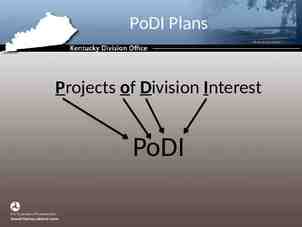Natives CARE Understanding Alzheimer’s Disease and Dementia in
31 Slides4.31 MB
Natives CARE Understanding Alzheimer's Disease and Dementia in American Indian and Alaska Native People Outreach Clinic Presentation Meghan Jernigan, MPH (Choctaw), Project Lead Collaborators
Partnerships for Native Health Community-based action research, education and training Urban and reservation-based AI/AN populations across the lifespan Physical and mental health, chronic disease, elder health, healthcare needs 160 partners: tribal colleges, AI/AN organizations, tribes (30 active partners) 75 projects funded since 2007
Presentation Overview Context – Dementia 101 – American Indians/Alaska Natives (AI/ANs), cognitive impairment, and dementia – Washington State data Clinical Integration – Native outreach and education – Detection – Resources Collaborations and Partnership Opportunities
Mild Cognitive Impairment (MCI) Mild cognitive impairment is an early stage of cognitive change. – Patients or family members notice changes in thinking. – Impairment is documented by formal testing. – Patient is able to independently carry out daily activities. People with MCI are more likely to develop Alzheimer’s disease or other dementias than people without MCI.
What is Dementia? Dementia is a decline in mental ability, including memory, that is severe enough to result in loss of independence in typical daily activities. Dementia is most common in older adults and has many known causes. Alzheimer’s disease is the most common type of dementia in older adults.
What is Alzheimer’s Disease? When cognitive impairment is due to Alzheimer’s disease, symptoms usually start gradually and progress slowly, over many years. In its early stages, memory loss is mild, but with latestage Alzheimer's, individuals lose the ability to carry on a conversation and respond to their environment. There is no cure for Alzheimer’s disease, but there are opportunities for early diagnosis and interventions which temporarily slow the worsening of dementia symptoms and improve quality of life.
What is Alzheimer’s Disease? Mild Cognitive Impairment Dementia Cognitive Function Gradual accumulation of neuropathology Years
What is Alzheimer’s Disease? tau amyloid neurodegeneration
Alzheimer’s Disease and AI/ANs The number of AI/ANs age 65 and older is growing fast. The US Census Bureau estimated that in 2012, 266,000 AI/ANs were aged 65 and older According to projections, the population of Native elders in this age range will almost quadruple by 2050, to 996,000. Many experts believe that Alzheimer's disease is underdiagnosed in our communities.
AI/AN Dementia Risk: What do we know? Two recent studies of Alzheimer’s disease: Mayeda et al. Alzheimer’s & Dementia (2016) ‒ AI/ANs and African Americans have the highest incidence of dementia among all racial and ethnic groups. Chen and Panegyres. Journal of Alzheimer’s Disease (2016) ‒ AI/ANs and Native Hawaiians have twice the risk of early-onset dementia (before age 65) relative to Whites (lowest risk group).
Challenges in Addressing Alzheimer’s among AI/ANs Fragmented healthcare and surveillance systems ‒ 26 hospitals operated by the Indian Health Service ‒ 19 tribally operated hospitals Inconsistencies in diagnostic criteria Known barriers to screening ‒ Lack of transportation ‒ Little continuity of care Alzheimer’s stigma and myths ‒ “Normal part of aging” ‒ “Can’t be treated” ‒ Patients might be labeled “crazy” and could be removed from their homes
Why diagnose Alzheimer’s disease? Memory loss may be caused by other issues, such as sleep apnea, alcohol use, stroke, traumatic brain injury, or the side effects of medication. A diagnosis of Alzheimer’s disease means that the patient’s memory and thinking problems are expected to gradually worsen. It is important to begin planning for future care needs, ideally while the patient can participate in the discussion. An accurate diagnosis can help the patient and family obtain access to appropriate resources for education and support.
2017 Facts and Figures Alzheimer’s Association 2017 Disease Facts and Figures http://www.alz.org/
Alzheimer’s in Washington State 100,000 cases in Washington - 40% increase expected by 2025 Third highest incidence rate in the US Third leading cause of death 9th cause of death among AI/AN in Washington State 2006-2010. Alzheimer’s Association. 2017 Alzheimer’s Disease Facts and Figures. Alzheimer’s & Dementia 2015;11(3)332 Washington State Death Certificates, 2006-2010 corrected for misclassified AI/AN race, NWPAIHB.
Early Detection Fewer than 50% of cases of dementia are diagnosed in a clinical setting. Family members and healthcare providers play a critical role in detecting mild cognitive impairment and dementia. Better diagnostic aids are needed ‒ Culturally relevant ‒ Brief Connoly et al, Aging and Mental Health, 2011; Mattson, et al. JAMA; 302(4):385-393. ‒ Cost-effective
Clinic-based Evaluation Interview and history Physical and neurologic exam Cognitive assessment Depression screening Functional status Medical history review Medication review Laboratory tests Brain imaging Repeat evaluation in 6-12 months if cause unclear Source: Dementia Update for Primary Care: Detection, Diagnosis and Management. Dr. Kristoffer Rhoads, PhD. Seattle, WA 2/7/17
Clinic-based Screening http://www.alz.org/national/documents/10 signs checklist.pdf
Cognitive Screening Tools Mini-Mental State Examination (Folstein et al., 1975) – Sensitivity 66-73% – Specificity 87-92% Mini-Cog (Borsen et al., 2000) – Sensitivity 65-85% – Specificity 87-91% Montreal Cognitive Assessment (Nazreddine et al., 2005) – Sensitivity 90-100% – Specificity 87-90% Source: Dementia Update for Primary Care: Detection, Diagnosis and Management. Kristoffer Rhoads, PhD. Seattle, WA 2/7/17
Clinical Imaging Brain MRI ‒ ‒ ‒ No tumor No stroke Hippocampal shrinkage
Prevention and Intervention Education & Mental Stimulation Healthy Diet Social Engagement Physical Activity & Sleep Stress Management Reduced risk of dementia Baumgart, Matthew, et al. Alzheimer’s & Dementia (2015) Summary of the evidence on modifiable risk factors for cognitive decline and dementia: A population-based perspective.
Modifiable Risk Factors in Mid-Life Diabetes Hypertension Obesity Social Engagement Physical Activity Tip: Wellness programs are ideal for staging mini-memory screening events.
Partnership Activities Distribute educational materials in clinic waiting rooms Distribute materials at health fairs and powwows Mail fact sheet to priority audiences Resource sharing Capacity building
Partnership Activities Provider training ‒ Integrate practice recommendations described by the Alzheimer's Association ‒ Promote principles of patient-centered care Dementia follow-up with specialists ‒ Focus on active clinic patients who are AI/AN ‒ Facilitate follow-up clinic visits to review test results ‒ Refer patients interested in research participation to the University of Washington Alzheimer’s Disease Research Center
Partnership Activities Improve patient and family knowledge of dementia by hosting “Natives Care: Understanding Alzheimer’s Disease,” an inservice session for community ‒ ‒ ‒ ‒ ‒ Share a digital story on Alzheimer's disease Review the signs and symptoms of dementia Discuss implications for AI/ANs Distribute educational materials Engage in dialogue with community members
Allied Partners University of Washington Memory and Brain Wellness Clinic Based at Harborview Medical Center in Seattle Multidisciplinary: psychiatry, neurology, geriatrics, social work Neuropsychologic testing and cognitive rehabilitation Examples of free community offerings ‒ ‒ ‒ ‒ Living with Memory Loss: A Basic Guide (download) Memory Loss: Let’s Face It (monthly lecture) Powerful Tools for Caregivers (quarterly education series) Professional education (lectures available online)
Partnership Activities
Other Research Activities “Alzheimer's Disease Research Study for American Indians and Alaska Natives” is a pilot study that was funded to: ‒ Develop and deliver a presentation on Alzheimer’s disease research ‒ Administer pre- and post-presentation surveys ‒ Conduct focus groups with AI/ANs on the impact of the presentation
Research Activities at University of Washington AI/ANs are under-enrolled in clinical research and population-based studies. The University of Washington Alzheimer’s Disease Research Center is a site for clinical trials and studies of potential treatments, prevention strategies, and new diagnostic approaches for Alzheimer’s disease and related neurodegenerative conditions. http://depts.washington.edu/mbwc/research/clinica l-trials
Research Opportunities at University of Washington Examples of intervention/treatment studies EMERGE; CONNECT: placebo-controlled drug trials for people with early-stage Alzheimer’s disease A4: placebo-controlled drug trial for symptomfree older adults Estia: computer games for older people with depression
Research Opportunities at University of Washington Examples of observational studies ‒ Alzheimer’s Disease Research Center Clinical Core: natural history study to learn about cognitive aging over time in people with and without memory loss ‒ IDEAS: Medicare-funded study to learn whether brain scans for detection of amyloids are useful ‒ Neuroimaging and function studies to learn how changes in walking are associated with cognitive function in older people
Contacts Meghan Jernigan, MPH Staff Scientist [email protected]




































